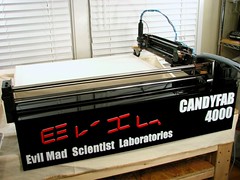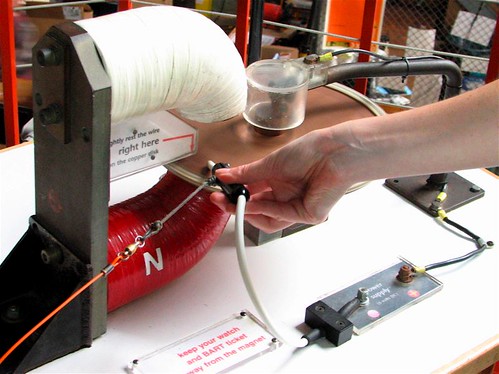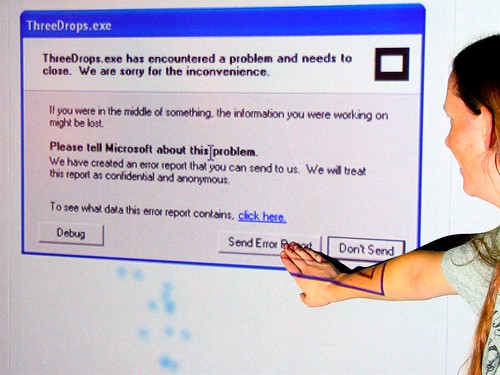While we don’t normally find ourselves as part of the case mod community, we’ve been invited to participate in the Rods and Mods event, “The Kustom Kulture of Radical Computer Modification” currently going on, Thursday through Saturday at the Exploratorium in San Francisco. We’ll be attending this Saturday, showing off some of our recent projects and maybe even some hacked devices.
You can read more about this event here, and we’ll hope to see you there!Tag Archives: exploratorium
Young Makers at the Exploratorium

February 27th: Wearables & Soft Circuitry — Adrian Freed March 27th: Make Your Own Kind of Music — Walter Kitundu and Krys Bobrowski April 24th: Motors & Mechanisms — Brad Prether and Ernie Fosselius Update: Dale Dougherty posted an article about the event here.
Webcast links
We got all packed up and headed out to the Exploratorium today for the Maker Webcast about 3D Fabrication in sugar. Thanks to Dale Dougherty from Make Magazine for inviting us – we had a great time! In case you missed it, here are the links to the archived show on the Exploratorium website: mp4, real player, windows media. (If in doubt, try the mp4 version!)
CandyFab at the Exploratorium Maker Webcast
 Come see the CandyFab 4000 in action on Saturday, July 28 at 1:00 PM (PDT) at the Exploratorium in San Francisco or live online for the Maker Saturday Webcasts.
Come see the CandyFab 4000 in action on Saturday, July 28 at 1:00 PM (PDT) at the Exploratorium in San Francisco or live online for the Maker Saturday Webcasts.
Make: Magazine is partnering with the Exploratorium to bring weekly webcasts of interviews with makers this summer. If you haven’t been to the Exploratorium yet, use this as an excuse! It is one of our favorite sources of inspiration.
Duchamp redux
Last week I visited the Exploratorium with some friends, and we saw this remarkable drinking fountain. The exhibit cleverly produces a little bit of introspective psychological trickery: It notes that the water is clean, and that the toilet has never been used, but asks why you might hesitate to drink from it? Funny how our brains work sometimes.
Drinking aside, the exhibit reminds me in particular of one other famous fountain.
Continue reading Duchamp redux
Homopolar motor exhibit at the Exploratorium
A couple of weeks ago, we visited the The Exploratorium, where we saw this giant homopolar motor, labeled “Daisy Dyno.” This is a classic demonstration of a homopolar motor. There’s a giant permanent magnet. In its jaws sits a big copper disk that is free to spin. A low-voltage but high current power supply is provided, where the positive end is hooked to the bearing in the center of the copper disk.
To run the motor, you touch the loose lead from the negative end of the power supply to the edge of the copper disk. A neat little arrow shows you exactly where to touch. The electric current flows from the center of the disk to that point of contact, which is in the direction perpendicular to the magnetic field, which creates a force in the correct direction to cause the disk to spin. In order to help the electric currents move in a fairly straight line between the edge of the disk to the center, the disk has a lot of radial slits cut through it, giving the disk the appearance of a daisy (hence the name) when it’s at rest. In the photo here, it’s moving pretty quickly.
We, of course, are quite fond of motors and magnets and things that spin, and have (so far) written up three under-one-minute science projects that are related: How to build a homopolar motor, how to make the version that spins water instead of a metal disk, and how to make a super-simple directional compass.
When museum displays go bad….
In a recent trip to The Exploratorium, we happened by this giant display projected on the wall.
Presumably, it was intended to be interactive in some way, but this giant dialog box was unresponsive.Repeat after me: Doh!






